Healthcare costs can be confusing, but with the right knowledge and strategies, just about everyone can navigate this complex landscape effectively. Below are some helpful tips for employees to maximize their benefits and save money in the process.
Understanding Healthcare Costs
Before diving into cost-saving tips, it’s essential to understand the various healthcare cost components. Healthcare expenses can include premiums, deductibles, copayments, coinsurance, and out-of-pocket maximums. Additionally, there may be other costs associated with prescription medications, doctor visits, specialist consultations, diagnostic tests, and hospital stays. By gaining clarity on these, employees can make more informed decisions about their healthcare spending.
Take Advantage of Employer-Sponsored Accounts
Many employers offer tax-advantaged healthcare accounts to help employees manage their medical expenses more efficiently. These accounts include FSAs, HSAs, HRAs, and LSAs. Each account has its unique features and benefits:
- Flexible Spending Accounts (FSAs): FSAs allow employees to set aside pre-tax dollars to pay for eligible medical expenses not covered by insurance, such as copayments, deductibles, and prescription medications. Depending on the plan setup, at least some portion of any unused funds may carry over to the following year.
- Health Savings Accounts (HSAs): Employees enrolled in high-deductible health plans (HDHPs) are eligible to open and contribute to HSAs. HSA contributions are tax-deductible, and withdrawals used for qualified medical expenses are tax-free as well. Unused funds can be invested, and investment gains are also tax-free. HSAs offer the flexibility of carrying over unused funds from year to year. This makes HSAs not only effective long-term savings tools for healthcare costs but also valuable for building retirement savings.
- Health Reimbursement Arrangements (HRAs): Employer-funded HRAs reimburse employees for eligible medical expenses. Employers can design HRAs to suit their specific needs, including which expenses are covered and rollover provisions. Employees do not contribute to HRAs, and funds are typically not portable if they change jobs.
- Lifestyle Spending Accounts (LSAs): LSAs are a newer type of account. Employers may offer to cover expenses related to wellness, lifestyle, and even certain non-healthcare expenses, such as gym memberships, office expenses, and financial planning classes. Like HRAs, LSAs are funded by the employer, and the rules regarding contributions and rollovers vary. However, employees will be taxed on LSA usage.
By taking advantage of these employer-sponsored benefit accounts, employees may be able to reduce their taxable income, save on healthcare costs, and effectively budget for future medical needs.
Maximize Preventive Care Services
Preventive care (check-ups, vaccinations, screenings, wellness exams, etc.) is usually covered at no cost under most health insurance plans. Taking advantage of these services not only promotes overall health and well-being but also helps identify potential health issues early, leading to better outcomes and lower healthcare costs in the long run.
Comparison Shop for Healthcare Services
Healthcare costs can vary significantly depending on the provider and location. Before having any medical procedure or service, employees should research and compare costs among different providers and facilities. Many insurance companies offer online tools or mobile apps that compare prices for common procedures.
Utilize Telemedicine Services
Telemedicine services surged in popularity during COVID and although utilization rates have declined somewhat, they remain higher than before the pandemic. Virtual consultations with healthcare providers can be a convenient and cost-effective alternative to traditional in-person visits, particularly for non-emergency medical issues. Many health insurance plans now offer telemedicine benefits, allowing employees to access care from the comfort of their own homes without incurring additional expenses.
Stay In-Network to Save on Healthcare Costs
Health insurance plans often have networks of preferred providers, hospitals, and pharmacies with whom they have negotiated discounted rates. Employees can save money on healthcare costs by choosing in-network providers whenever possible. Going out-of-network may result in substantially higher out-of-pocket expenses, as insurance plans typically cover a lower percentage of costs for services received from out-of-network providers and sometimes they apply to a different deductible than expenses received from in-network providers.
Review and Understand Your Benefits
It’s crucial to review health insurance benefits carefully and understand what services are covered, their associated costs, and the out-of-pocket expenses you may be responsible for. By being informed, you can avoid unexpected costs and make more cost-effective decisions about your healthcare.
Healthcare Costs Summary
Navigating healthcare costs can be daunting, but with the right strategies and resources, employees can take control of healthcare spending and maximize their benefits. By taking advantage of employer-sponsored accounts, maximizing preventive care services, comparison shopping for healthcare services, utilizing telemedicine, staying in-network, and understanding their benefits, employees can save money and make informed decisions about healthcare needs. By empowering employees with the knowledge and tools to manage their healthcare costs effectively, employers can promote financial wellness and enhance overall employee satisfaction and well-being.
For 40 years, DataPath has been a pivotal force in the employee benefits, financial services, and insurance industries. The company’s flagship DataPath Summit platform offers an integrated solution for managing CDH, HSA, Well-Being, COBRA, and Billing. Through its partnership with Accelergent Growth Solutions, DataPath also offers expert BPO services, automation, outsourced customer service, and award-winning marketing services.

